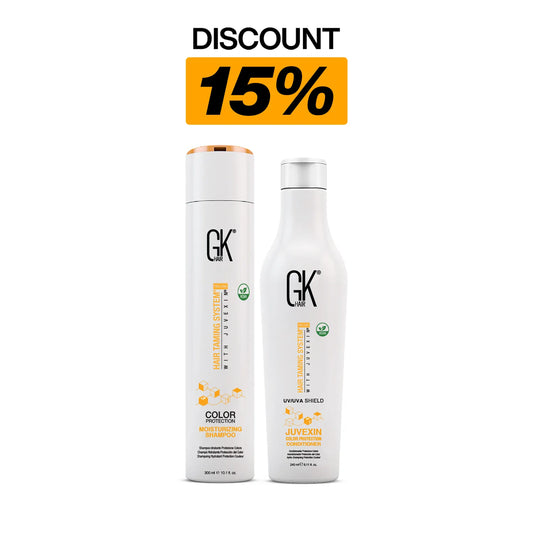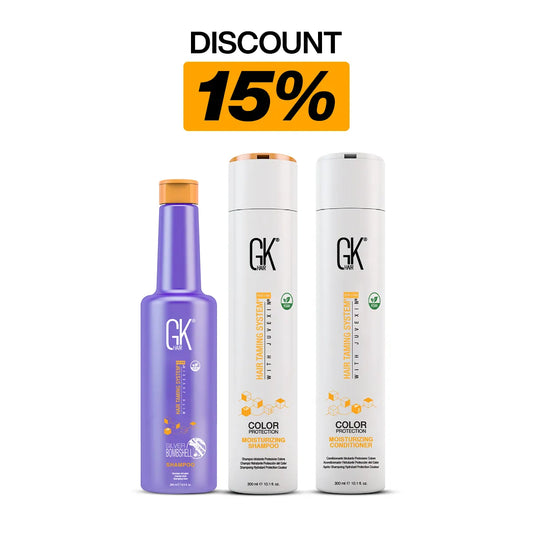Hair porosity refers to your hair's ability to absorb and retain moisture. Understanding whether your hair has low or high porosity can significantly influence your choice of hair care products and techniques, helping you maintain healthy, well-moisturized hair. In this guide, we’ll explore the differences between low and high porosity hair, their characteristics, and how to care for each type effectively.
What is Hair Porosity?
Hair porosity is determined by the condition of the hair cuticle, the outermost layer of the hair shaft. The cuticle consists of overlapping scales that can be tightly closed (low porosity) or more open (high porosity). The porosity of your hair affects how well it absorbs and retains moisture and other products.

4. Characteristics of Low Porosity Hair
-
Cuticle Structure
Description: The cuticles are tightly packed and lie flat, making it challenging for moisture and products to penetrate the hair shaft.
Feel: Hair often feels smooth but may resist absorbing moisture. -
Moisture Absorption
Description: Low porosity hair takes longer to absorb moisture and can also be slow to dry.
Tip: Using heat, such as a warm towel or a hair steamer, can help products penetrate the hair shaft more effectively. -
Product Buildup
Description: Due to its resistance to absorption, low porosity hair can experience buildup on the surface.
Tip: Opt for lightweight, water-based products, and clarify your hair regularly to remove any buildup. -
Styling Challenges
Description: It may be difficult for low porosity hair to hold styles and products for long periods.
Tip: Choose products that provide a light hold and avoid heavy, greasy formulas.
4. Characteristics of High Porosity Hair
-
Cuticle Structure
Description: Hair cuticles are raised or have gaps, allowing moisture and products to penetrate easily but also enabling them to escape quickly.
Feel: Hair may feel rough or dry and can be more prone to frizz. -
Moisture Absorption
Description: High porosity hair absorbs moisture quickly but can lose it just as fast.
Tip: Use leave-in conditioners and oils to lock in moisture and keep your hair hydrated. -
Product Retention
Description: While high porosity hair absorbs products easily, it may also experience product buildup if not managed properly.
Tip: Use lighter products and avoid over-applying to prevent buildup. -
Styling Benefits
Description: High porosity hair often holds styles well due to its ability to absorb products and moisture.
Tip: Ensure proper hydration to maintain the health and elasticity of your hair.
How to Care for Low Porosity Hair
-
Use Heat
Tip: Applying products with a warm towel or using a heat cap can help open up the cuticle for better product penetration. -
Opt for Lightweight Products
Recommendation: Choose lightweight, water-based conditioners and styling products that won’t weigh down your hair. Consider using GK Hair’s Moisturizing Shampoo for optimal results. -
Regular Clarification
Tip: Use a clarifying shampoo, like GK Hair's Balancing Shampoo, occasionally to remove product buildup. -
Avoid Heavy Oils
Tip: Choose lighter oils or leave-in conditioners that won’t leave residue. GK Hair’s Leave-In Conditioner is a fantastic option for low porosity hair.

How to Care for High Porosity Hair
-
Seal in Moisture
Tip: Apply heavier oils or butters to help seal in moisture. GK Hair’s Nourishing Oil is an excellent choice. -
Use Protein Treatments
Recommendation: Incorporate protein treatments to strengthen and repair high porosity hair. GK Hair’s Protein Cream can be very beneficial. -
Avoid Overwashing
Tip: Wash your hair less frequently to prevent stripping it of natural oils. Opt for a gentle shampoo and conditioner combo. -
Use Leave-In Conditioners
Tip: Applying leave-in conditioners can help keep your hair hydrated throughout the day. GK Hair’s Leave-In Conditioner works wonderfully for this purpose.
Conclusion
Understanding your hair’s porosity is essential for selecting the right products and techniques for optimal care. Low porosity hair benefits from heat and lightweight products, while high porosity hair needs moisture sealers and protein treatments. By tailoring your hair care routine to your hair’s porosity, you can achieve healthier, more manageable hair.
For more tips on hair care and product recommendations, please visit the GK Hair blog. We’re here to help you explore our range of high-quality hair products in Canada designed to meet your unique hair care needs. Embrace these insights to enhance the health and beauty of your hair, no matter its porosity!













